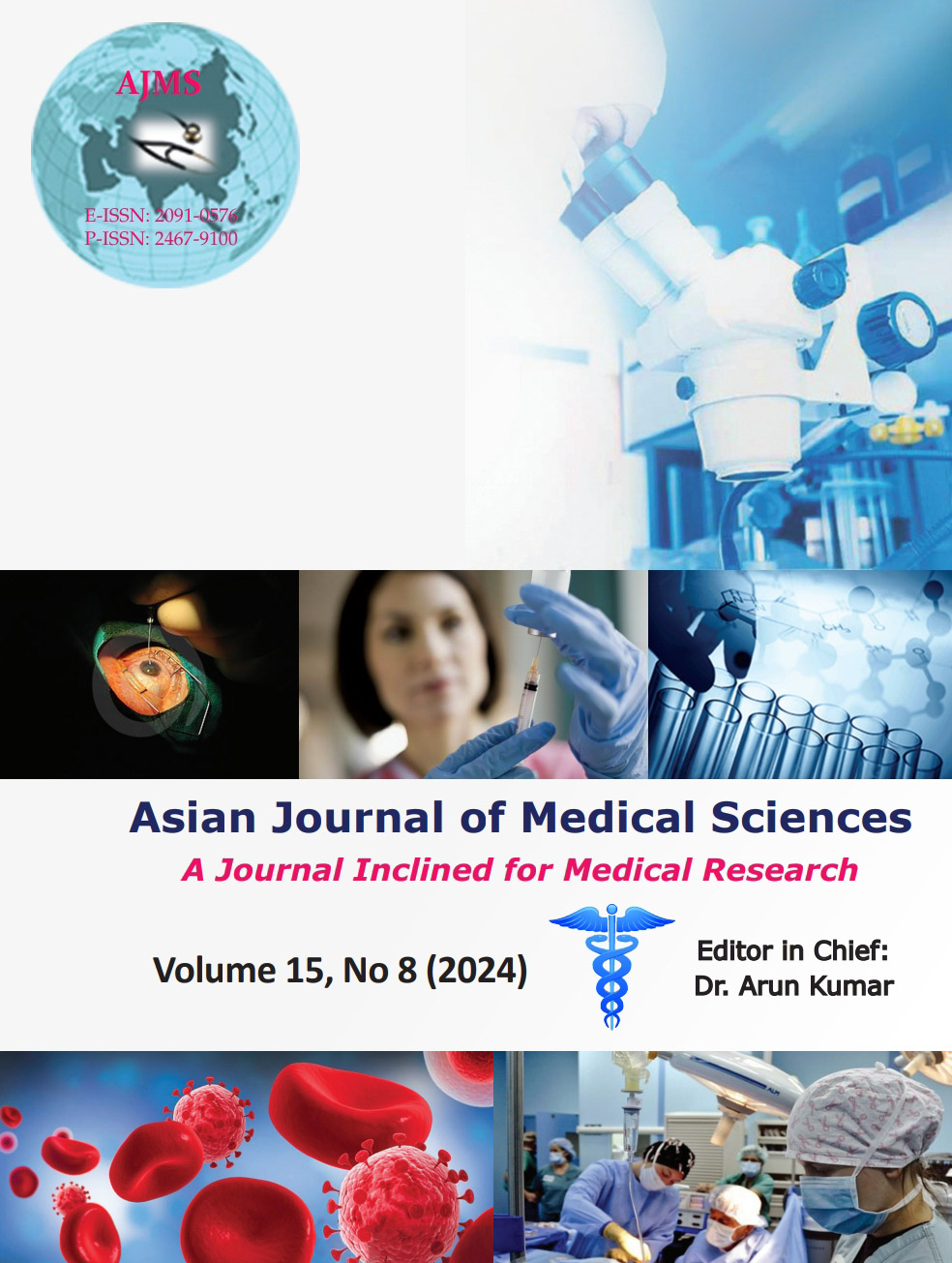To find the correlation between transverse cerebellar diameter measured by cranial ultrasound within 48 h of birth and gestational age as estimated by last menstrual period
Keywords:
Transverse cerebellar diameter; Gestational age; Last menstrual periodAbstract
Background: Gestational age (GA) may be assessed at any time during pregnancy, and several modes of assessment exist, each requiring better diagnostic techniques that may result in more precise estimates of GA, which could lead to quicker medical management of a pregnant patient. The largest diameter across both hemispheres, measured from outer to outer margin, is the transverse cerebellar diameter (TCD).
Aims and Objectives: We aimed to predict the correlation between TCD measured by cranial ultrasound within 48 h of birth and GA as estimated by the last menstrual period.
Materials and Methods: The present study was conducted in the Department of Pediatrics, Dr. S. N. Medical College, Jodhpur, Rajasthan. Ethical clearance was obtained from the Institutional Ethical Committee. It was a cross-sectional observational study and the duration of the study was 6 months. We split the population into three groups based on GA: (a) <32 weeks of GA, (b) 32–36+6 days of GA, and (c) 37–42 weeks of GA. We enrolled 25 neonates from each group.
Results: A very strong positive correlation between TCD and GA in infants was <32 weeks of gestation age, in infants 32–36 weeks+6 days of gestation age, and in infants 37–42 weeks of gestation age. Regression analysis shows a very strongly significant relationship. Hence, the TCD is a better predictor of GA in the third trimester. Our study reported that there is a close relationship between TCD and GA, with TCD increasing linearly from <32 weeks to 42 weeks. GA can be predicted to be 1.43 weeks by assessing TCD on neonatal cranial ultrasonography images.
Conclusion: The TCD is a better predictor of GA in the third trimester. Our study reported that there is a close relationship between TCD and GA, with TCD increasing linearly from <32 weeks to 42 weeks.
Downloads
Downloads
Published
How to Cite
Issue
Section
License
Copyright (c) 2024 Asian Journal of Medical Sciences

This work is licensed under a Creative Commons Attribution-NonCommercial 4.0 International License.
Authors who publish with this journal agree to the following terms:
- The journal holds copyright and publishes the work under a Creative Commons CC-BY-NC license that permits use, distribution and reprduction in any medium, provided the original work is properly cited and is not used for commercial purposes. The journal should be recognised as the original publisher of this work.
- Authors are able to enter into separate, additional contractual arrangements for the non-exclusive distribution of the journal's published version of the work (e.g., post it to an institutional repository or publish it in a book), with an acknowledgement of its initial publication in this journal.
- Authors are permitted and encouraged to post their work online (e.g., in institutional repositories or on their website) prior to and during the submission process, as it can lead to productive exchanges, as well as earlier and greater citation of published work (See The Effect of Open Access).




